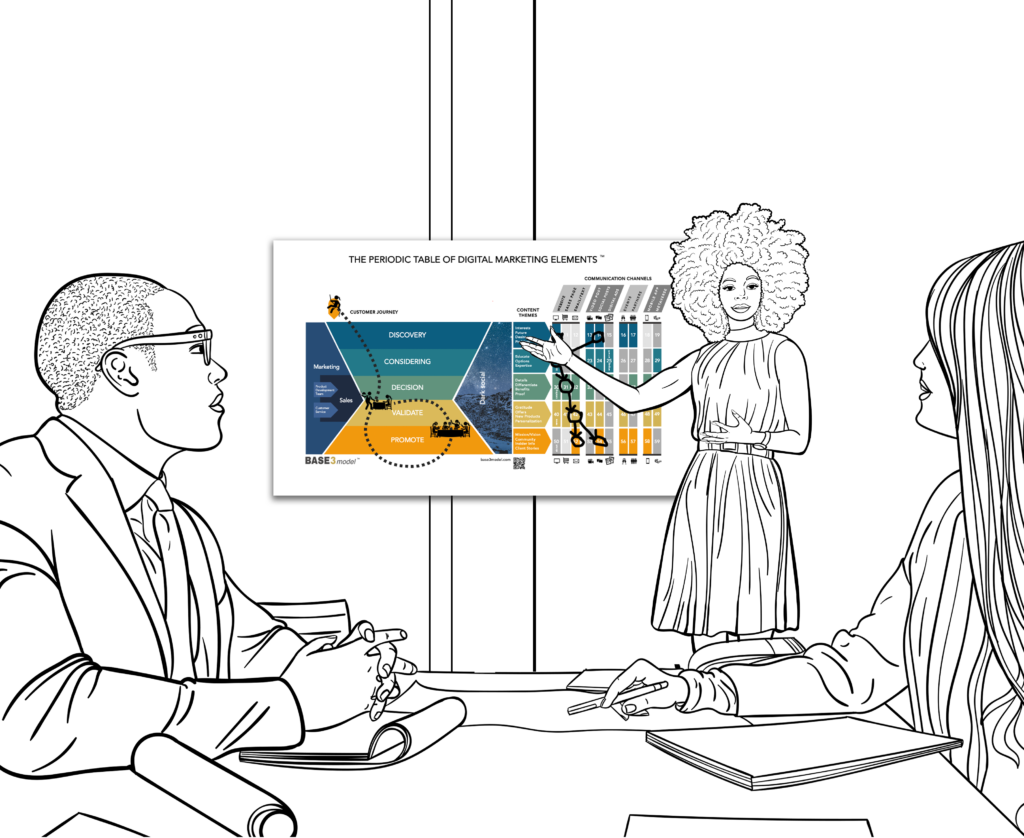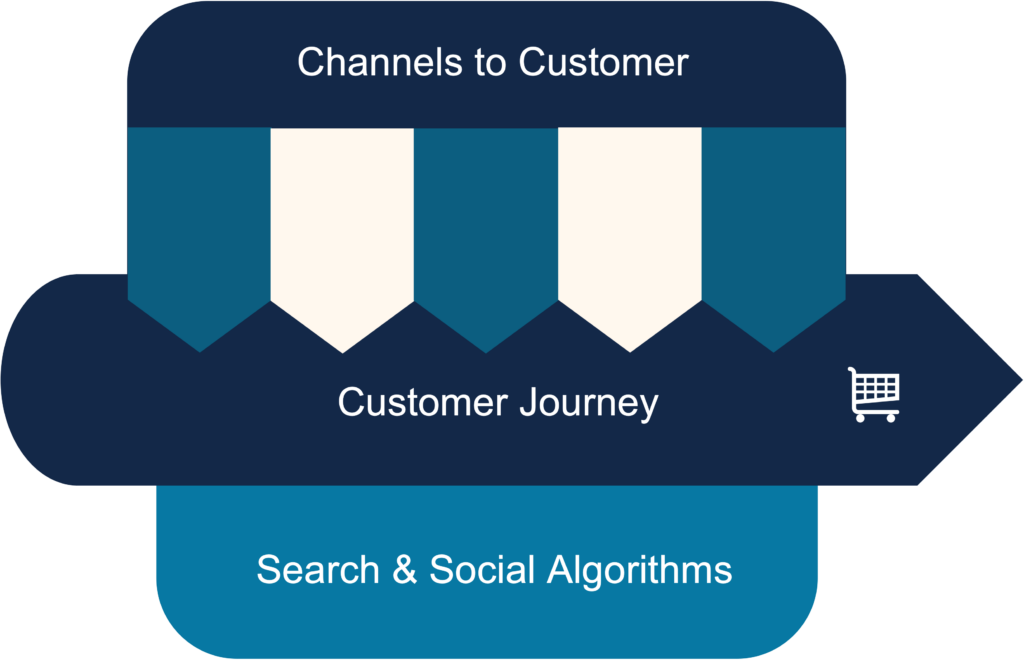About BASE3

BASE3 is a digital marketing framework anchored by three elements:
- The Customer Journey,
- The content needed by the customer at each level of their journey, and
- The channels used to deliver that content.
The model is summarized in a chart called “The Periodic Table of Digital Marketing Elements”. The chart can be used to map a customer’s journey, through a marketing campaign, providing a visual representation of how the customer travels from learning about the brand to making a purchase and promoting the brand. The numbers on the chart can be used for campaign production.
Incorporating Lean Marketing & Growth Marketing
BASE3 incorporates principles of Lean and Growth Marketing.
Lean Marketing puts the customer experience at the center of all decisions. Improving the customer journey is a priority. All activity is focused on adding value for that customer, and eliminating activities that do not. Growth Marketing focuses on retaining customers, and creating a long-term, measurable relationship resulting in additional sales.
How BASE3 Began
The BASE3 Model emerged out of what its architect, W.L Wilder, heard over-and-over again from CEOs: “I know that we need to be active on social media, should do something about SEO, and we should probably be writing blog articles, but I don’t know how they work, where to start, or if they will actually bring us more business. I feel like I am just throwing money into the void!”
After doing a deep dive into marketing theory and strategy, Wilder came to a realization. No one is showing clearly how to make decisions about digital marketing. Even though most businesses have the same marketing assets such as a website, social media profiles and email, the same communication channels, standardized framework as a starting point.
There is no naming convention for the various tasks that now most businesses are undertaking. Business owners often feel that digital marketing is everything everywhere all of the time. When they work with a marketing team, they don’t feel confident about the tactics being used. With all of the knowledge we have, Wilder thought, there must be a core set of rules to follow that will guide these really important decisions. There must be a common way to reference these activities in documentation and discussions.
As the world emerged from COVID in 2022, Wilder worked over nine months to architect BASE3. With so much about digital marketing always fluctuating, the starting point was to identify the unchanging, least-common denominators in digital campaigns. Wilder distilled digital marketing into three certainties. They are titled “The Three Certainties Of Digital Marketing” and they are the foundation for the BASE3 model.
“The Three Certainties Of Digital Marketing”
1. Most humans make decisions in the same way
Most humans make decisions in the same way: we become aware of a problem or desire, look for the best solution by comparing choices, pick that solution, get validation from others that it was the right decision, and then they create a community around their decision so that they have a shared experience that further supports their decision. We are influenced by urgency, emotion, and acceptance.
2. Search & social align with the human decision making process
Search engines and social media platforms have integrated the human decision making process into their algorithms, and measure user behavior in order to make predictions about what content to present in order to lead the individual to an action. This is done through tracking user activity, and language.
3. There are communication channels
There are one way and two communication channels in place that make it possible for you to communicate with, and get feeback from, your customers. Most businesses are now using the same channels to communicate with their customers: website, email, articles, social profiles, video, digital ads, and for some, broadcast, print ads, radio, phone and direct mail. This means that you do not need to reinvent the wheel. It is well established which channels are appropriate for different stages in your customer’s journey. You can leverage that knowledge for your own gain.

How algorithms view the customer journey
There is a quote by the famous copywriter Eugene Schwartz that you should study.
“If he is not yet aware of what he really seeks but is concerned with the general problem, your headline starts with the problem and crystalizes it into a specific need (COLD LEAD).
If he is not aware of your product but only has the desire itself, your headline starts with the desire (WARM LEAD).
If your prospect is aware of your product, and has realized that it can satisfy his desire, your headline starts with the product (HOT LEAD).”
~Eugene Schwartz
What this quote means in algorithm terms, is that when someone has identified a problem, they are going to be doing searches around the periphery of the solution. They don’t yet know what the solution is, and they certainly don’t know about you. This means that you need to be creating content that is discoverable by these broad searches if you are trying to gain brand awareness. You will be using key words and hash tags that will help you get discovered.
If someone is aware of the solution, from an ad engine (algorithm) perspective, they have engaged with you or your direct competitors in some way, and a pixel or tag has tracked them, so you can connect with them directly about your solution through an ad. You will be using key words and hash tags directly related to your solution.
When your customer is ready to make a purchase, the ad engines and pixels know that this individual customer is aware of their problem, the solution, and YOU. This is when you need to have content that dives into the details, benefits, differentiate yourself, and offer proof. This is typically done on one page, called a “Sales Page”. On a social platform, your customer may also be shown posts or content or ads that the algorithm believes will activate them to click to learn more and buy.